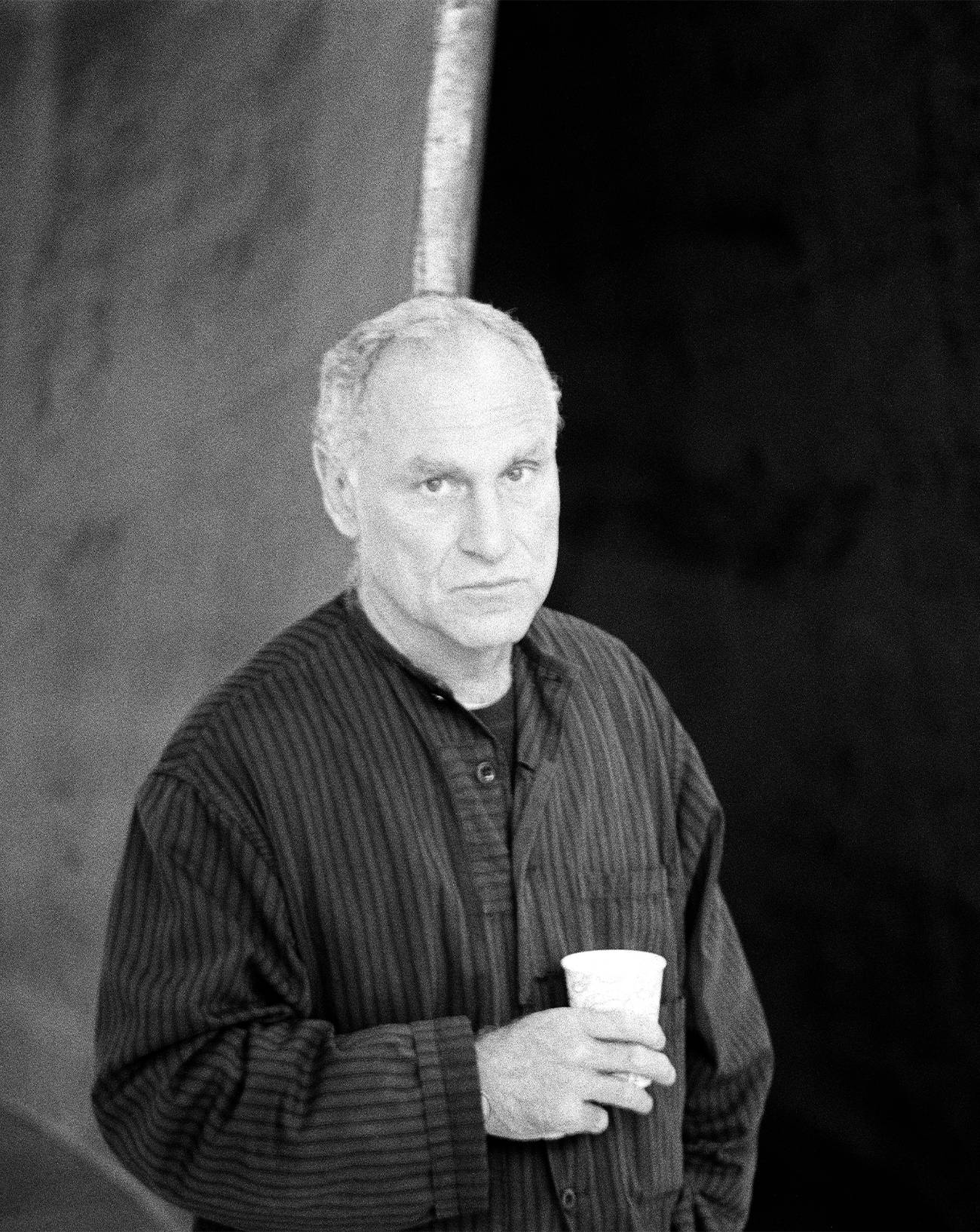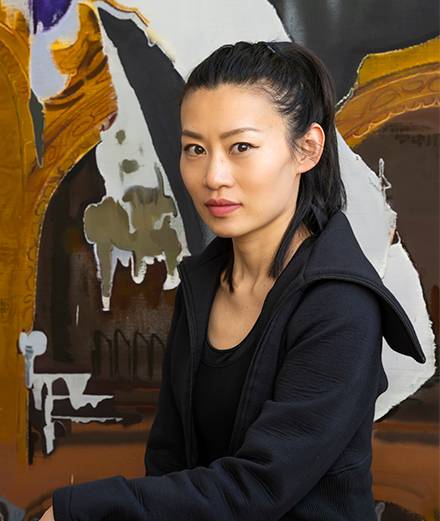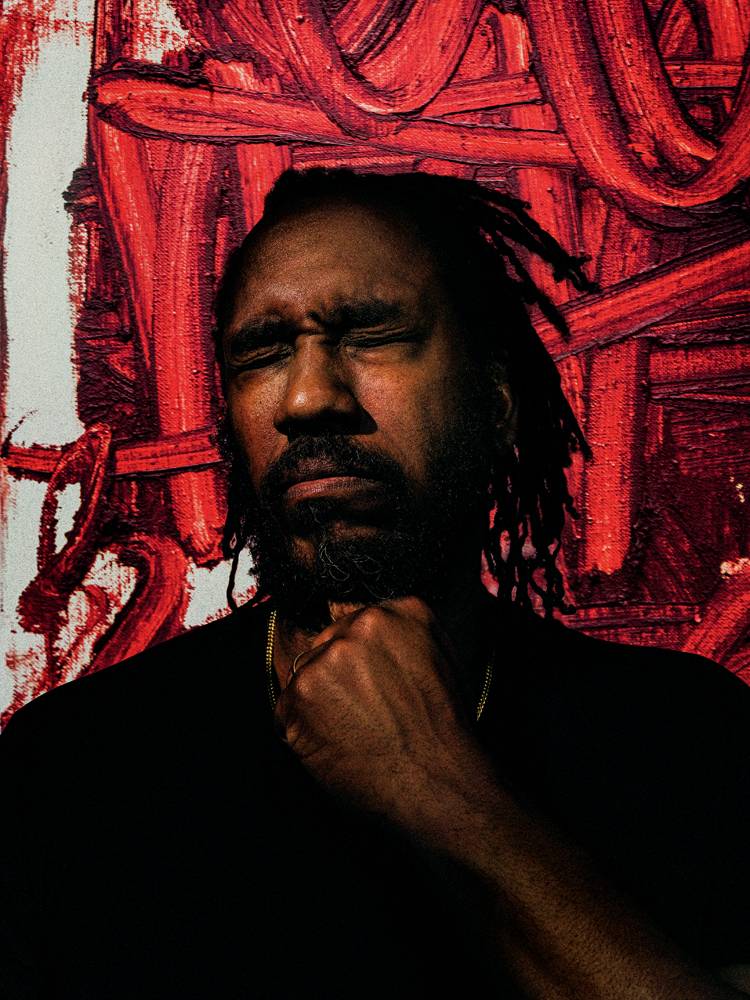

Numéro: How did this exhibition come about?
Rick Owens: It’s not like I approached anybody, the Triennale people called out of the blue. Since my whole group is Italian and my factories are Italian, it seemed appropriate to do something there. I consider the audience in Milan to be fairly difficult about anything involving fashion, so I allowed myself to be flattered by this proposal. And very enthusiastic. It’s not like I have a lot of people asking me to do a retrospective. So I was very happy to do it, and also happy to be allowed to do it on my own terms. Because it’s almost an obituary, and of course I always tend to look at things on the dark side. But that’s essentially what we’re talking about: you’re establishing the way you want to be seen for eternity, and it’s much better to be able to do that yourself than having your work interpreted. That would make me crazy, having to see an interpretation; I can’t think of anyone on the planet who I would trust to do that. Except for Michèle [Lamy, Owens’s wife] – Michèle would be pretty good. But being able to control the way you present yourself is a great, wonderful thing, although there’s also a weird note of finality about it. It could be disturbing if I allowed it to be, but that would be too indulgent. Obviously there’s a melancholic side to it though. You feel like you’re capturing yourself at your summit, and everything could go downhill from now on. And that you’ve set in stone who you think you want to be.
Was it crucial for you to include the furniture you’ve designed as well as the fashion?
Yes, it’s all interconnected. I called it Inhuman Subhuman Superhuman, which is a very pompous title, and tried to temper the pomposity by calling it a work of arte povera. An arte povera Gesamkunstwerk – it’s so ridiculous that it can’t be pompous! I always wanted it to be a complete way of looking at things, and not just for Sundays or for special appearances. Because it’s more truthful that way. That’s what I would want to see. Of course everyone has a list of heroes – mine includes Donald Judd and Michael Heizer, all of these people who really committed themselves to an aesthetic. That’s the kind of creator I want to see, so that’s who I want to be.


Why the title Inhuman Subhuman Superhuman?
I think it’s something we can all relate to. We all struggle with who we are, who we’re trying to be, who we’ve been in the past. We have shame, we have pride, we have self delusion. I think it’s hard for people to love themselves, they obsess over their flaws. This is all autobiographical, I’m just assuming all these things, because I guess people’s emotions and impulses are fairly similar. These are the things I’m going through that I think everyone can relate to. We have moments of self-loathing, of being horrible people, of complete self delusion, and moments of a really authentic expression of goodness. I’ve been searching for the right balance, which is what everyone does. It’s almost comical to look back at your past and think, “Oh, I was a real fuckup here,” or “I did okay here and maybe tomorrow I’ll do better.” It’s a constant struggle to find that serenity where you’re happy with yourself and where you are. That’s a bit of a fantasy, I don’t think anyone ever reaches that point. But the point is you keep trying, you do your best, you make the effort. I think the title summarizes that struggle in a clinical and objective way. It’s the story of humanity.
So your museum show is autobiographical. And more generally, anyway, your fashion is directly connected to your own personality and way of life, unlike many fashion designers who salute their audience in jeans and T-shirts after showing extravagant dresses on the runway.
Yes, how can people not feel insulted by that? I just don’t get it, it makes me crazy. But that’s the part where I start judging other people, and that’s my inhuman part. I have no right to be judging other people. Other people get to do things their way, they have other priorities and other motivations, so who I am to judge how they do things ? See how that works? I’m constantly criticizing myself and then correcting myself, and then forgiving myself. So I’m always very busy!
Have you ever tried meditation?
I think going to the gym is my meditation. And I also take a nap every day. And it just happens naturally, it’s not like I decided that this is what I’m going to do for my meditation. It just felt right, and became a habit. It allows me to escape people and have an enforced moment of privacy, and when I wake up I almost always have a fresh perspective – a lot of times I wake up with a good idea. It’s almost an exercise to use the best part of me, guard my resources, protect my energy. So yeah, it’s like a form of meditation, though it’s not very formal. It’s very primitive.


You’ve always mentioned rage as something that fuels creation. Is it present in the show?
The sculptural element that I placed in the middle of the space is, to me, a kind of primal hollow, an energy of drive, ambition, rage, almost like ectoplasmic vomit. It also felt like an earthwork, creating a mountain of rage, of drive. I’ve been thinking a lot recently about the place of evil. How everything is in balance, how the world has always had an element of evil, and always will. It’s an essential part of life. I haven’t figured out how I feel about it, but if you’re just logical, it’s a part of living that never disappears. So you have to learn how to do positive things that balance it out. There have been moments in recent years when the negative force has become very prevalent, politically, ecologically. It’s not like I have a solution, I don’t know anything about it. The question is how do you deal with these ominous forces that threaten us. One of the things that makes me feel good is that we’re going through discomfort, but we’re also going through incredible luxury. The luxury of knowledge. The world has never seen such luxury before. And knowledge is power. So having this incredible level of luxury, and at the same time threats, such as nuclear war... There have been terrific moments in history, but people have also gone through very difficult times before. And it’s true we might be running out of resources, and species have gone extinct before, so maybe we will too. It’s silly to believe that we should be exempt from extinction. Anyway, we were talking about rage. [Laughs.] So yes, there is rage, but there is also deep peace, serenity. I recognize serenity and I aim for it. But I must recognize that rage has been a great motivating factor – it’s done me good. So reac- tion to conflict or pressure can be a very positive thing.
“If somebody really wanted to, they could look precisely at everything I do and break down the references.”
In your aesthetic you mix the 19th century, punk, grunge...
And I’m also looking at kid’s drawings, and African sculptures, anything that’s just an accumulation of history. If somebody really wanted to, they could look precisely at everything I do and break down the references. That’s what creators do: we all work from history, nobody invents anything new, we just invent new compositions. For the show, for example, I made a catalogue that’s very elaborate and which I based on Marcel Duchamp’s “valises.” It’s my own version of that, a box that has things in it, like a music album used to be. You would open the album cover on the inside and everything was very significant, very iconic, and you ended up remembering that art for the rest of your life. It’s what I tried to do with this box.
But when you work with someone like the performer Christeene, whose oeuvre might be seen as really primal and offensive to lots of people, what is your aim? To push boundaries? To offer an alternative vision of beauty?
Christeene to me represents joy. The joy of abandon – abandoning hypocrisy and indulging your id and your primal instincts that are very innocent and very charming. There is a childlike innocence in her provocation, something very cheerful and happy to what she does. The world can become very conservative. After everything we’ve been through, being shocked by what Christeene does is fake, it’s disingenuous. Christeene is theatre, a composition of commedia dell’arte, kabuki, Busby Berkeley Hollywood musicals, grand guignol... So we’ve seen all of it before. It’s just a wonderful release to allow yourself to project yourself onto Christeene. That’s the kind of thing that I endorse because I feel it creates a balance in the world. It counters false prudishness, false rules. And that’s the role I want to play: I want to be someone who’s a positive force, in my own tiny little way. I get to promote the values that I believe in, and people associate me with those values. And I feel there are enough people who can identify with those values, so I’m not alone.
“I use mess, I use chaos, but I suppose I use it in a very controlled way.”
Do you feel that today we’re going through more conservative times? With social media censoring nudity in an arbitrary manner, for example?
I feel that we have opened ourselves to a mock mentality... and that’s where evil comes in, where evil is essential. I’m not talking about incredible evil. I’m talking about an instinct among most people to at- tack. It can be mere sarcasm, like online comments on articles in The New York Times. It’s shocking how quickly those threads can degenerate into conflict. This has been one of the most shocking things in my life, seeing how easy it is for people to attack and start throwing stones. What does it say in the Bible? “May he who has never sinned throw the first stone.” Everybody in their life has done something wrong. There seems to be this mentality to attack on the internet that is very discouraging. So I think that’s what has created a lot of today’s conservatism. People are just afraid of being attacked. For being anything other than very normal.
What else will visitors see in your Triennale exhibition?
There are excerpts from some of my runway shows, but I blew them up on a big wall. They’re close ups, black and white and slowed down. It feels completely different to see them like that – it’s a nice way of looking at it from another perspective. There are videos of the shows, and then videos of preparations for the shows and for the collections. There’s actually a video of me that I took with my iPhone at the factory one day when nobody was there. I was draping something that was important to me – it was a new shape, a change for me. You drape things thousands of times and you get a great one only once in a while, so I was really lucky to catch that moment. Then there are a lot of things on display like show invitations which are part of the whole process. All of this creates a narrative. Of course there are mannequins dressed in my clothes, there are a few total looks, but we also mixed the collections. I’m not saying it’s messy, it’s very calculated. Some people would think it’s very stiff. But I like a little formality. Formality means that you’ve thought things through and made a decision based on rational thinking rather than instinct. A lot of it is instinct, but it’s a calculated formal composition. I use mess, I use chaos, but I suppose I use it in a very controlled way.
Rick Owens’s retrospective Inhuman Subhuman Superhuman is on show at the Triennale in Milan until 25 March.








